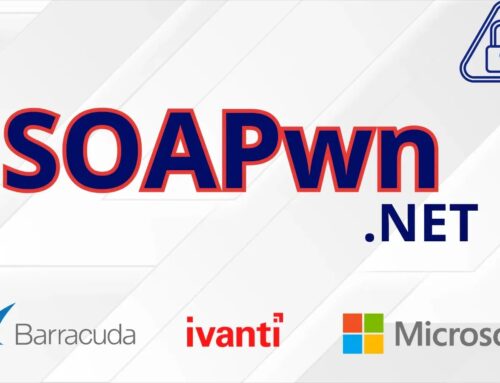
HubSpot’s Jinjava Engine Vulnerability Exposes Thousands of Websites to RCE Attacks
A critical vulnerability has emerged, striking at the core of web application security for thousands of businesses. HubSpot’s widely used open-source Jinjava template engine, a cornerstone for dynamic content generation, has been found to harbor a severe flaw. This isn’t just another security advisory; it’s a direct threat that could empower attackers to bypass sandbox restrictions and achieve full Remote Code Execution (RCE) on websites leveraging vulnerable versions. For IT professionals, security analysts, and developers, understanding and mitigating this risk is paramount.
Understanding the Critical Jinjava Vulnerability
The vulnerability, tracked as CVE-2025-59340, carries the highest possible CVSS v3.1 score of 10.0, denoting its critical severity. At its heart, the issue lies within a mechanism known as JavaType-based deserialization. In essence, this flaw allows a malicious actor to inject specially crafted data that, when processed by the Jinjava engine, can be interpreted and executed as arbitrary code. The core problem is the bypass of the sandbox environment, which is designed to isolate and restrict the execution of untrusted code.
Jinjava, being an open-source template engine, is utilized in various contexts beyond just HubSpot’s direct offerings. This means the impact of CVE-2025-59340 extends to any application, service, or website that relies on vulnerable versions of the engine, specifically those prior to version 2.8.1. The ability to achieve Remote Code Execution grants attackers complete control over the compromised system, allowing for data theft, defacement, further network penetration, or even the deployment of ransomware. This makes the Jinjava RCE a top-priority concern for any organization using the engine.
Impact and Scope: Who is Affected by the Jinjava RCE?
The immediate and most significant impact of this Jinjava RCE vulnerability is on websites and applications that have not yet updated their Jinjava template engine to version 2.8.1 or newer. Given HubSpot’s vast ecosystem and the widespread adoption of open-source components, the “thousands of websites” figure mentioned in the initial disclosure is not an exaggeration. Any platform that processes user-supplied templates or dynamic content rendered through Jinjava prior to the patch is at risk.
Organizations using HubSpot’s CRM, marketing, and sales hubs might be indirectly affected if their custom integrations or third-party applications rely on vulnerable Jinjava versions outside of HubSpot’s controlled environment. More broadly, developers who have integrated Jinjava into their custom Java applications, content management systems (CMS), or e-commerce platforms must immediately assess their exposure.
Remediation Actions: Securing Your Jinjava Instances
Mitigating the CVE-2025-59340 vulnerability requires swift action. The primary and most effective remediation is to update your Jinjava engine to a patched version immediately.
- Upgrade Jinjava: Update all instances of the Jinjava template engine to version 2.8.1 or higher. This version contains the necessary fixes to address the JavaType-based deserialization vulnerability.
- Identify All Jinjava Deployments: Conduct a thorough audit across all your applications and infrastructure to identify every instance where the Jinjava engine is deployed. This includes custom applications, third-party integrations, and any legacy systems.
- Review Sandbox Configurations: Even after upgrading, critically review your Jinjava sandbox configurations. Ensure that they are as restrictive as possible, preventing unnecessary access to system resources and dangerous Java classes. While the patch addresses the immediate vulnerability, a robust sandbox remains a crucial defense in depth.
- Implement Input Validation: Strengthen input validation mechanisms for any user-supplied data or template code that is processed by Jinjava. While not a direct fix for this specific RCE, robust input validation helps prevent many other injection-based attacks.
- Monitor for Suspicious Activity: Enhance monitoring capabilities for your web servers and applications that utilize Jinjava. Look for unusual process execution, unexpected file modifications, or abnormal network connections originating from these systems.
Tools for Detection and Mitigation
| Tool Name | Purpose | Link |
|---|---|---|
| Dependency-Check (OWASP) | Identifies known vulnerabilities in project dependencies, including Java libraries like Jinjava. | https://owasp.org/www-project-dependency-check/ |
| Black Duck (Synopsys) | Software Composition Analysis (SCA) tool for identifying open-source vulnerabilities and license compliance. | https://www.synopsys.com/software-integrity/security-testing/software-composition-analysis/black-duck.html |
| Snyk | Developer-first security platform for finding and fixing vulnerabilities in dependencies. | https://snyk.io/ |
| Veracode SCA | Identifies vulnerabilities in open-source components and provides remediation guidance. | https://www.veracode.com/products/software-composition-analysis |
The Broader Implications of Template Engine Vulnerabilities
The HubSpot Jinjava engine vulnerability underscores a persistent theme in cybersecurity: the critical importance of securing third-party and open-source components. Template engines, used to generate dynamic web content, often interact intimately with server-side logic and data. When vulnerabilities like RCE emerge in these components, they present a direct path for attackers to compromise entire systems.
Organizations must adopt a proactive approach to software supply chain security, regularly auditing their dependencies, staying informed about security disclosures, and implementing robust patch management processes. The potential for a single vulnerability in a widely used component to expose thousands of websites highlights the interconnected nature of the modern digital landscape and the shared responsibility of maintaining its security.





